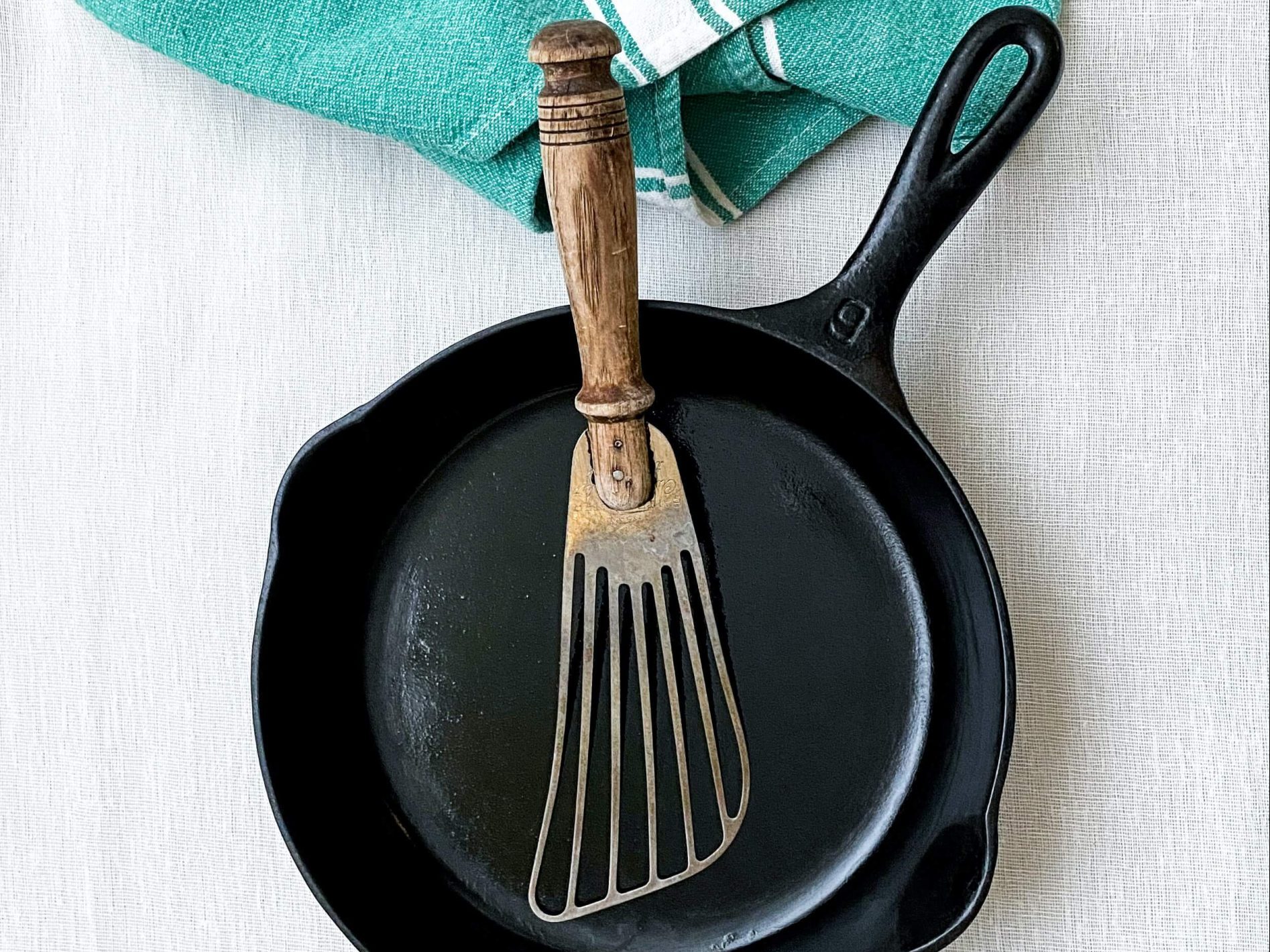Is Cast Iron Better than Non-Stick Pans

If you have been following my blog for a while, you might notice that I switched from using a non-stick pan to a Lodge Cast Iron pan for most of my dinners. I got my first cast iron pan as a Christmas gift and I fell in love with it soon after. I have to admit that cast iron pans are better than non-stick pans in most of the cooking, especially when I use them to cook steaks, salmon, pork chops…
Today I want to share some of my experience in using cast iron skillets and why I think they are better than non-stick pans.
Cast Iron Cookware is Durable
Cast iron cookware has long been a staple in household kitchens and restaurants around the world. Dating back to the Han Dynasty in China, it serves as a spectacular recipient for many different types of cuisine. Cast iron skillets or pans are essentially a single cast piece of metal — including the handle — that are thicker than other pans and provide heavy-duty durability and heat retention. They can be transferred conveniently from the stovetop to the oven and withstand high temperatures for long periods of time. Even better, cast iron cookware is non-stick when properly cared for. Still not sure if you should favor cast iron over traditional non-stick pans? Keep reading, I am going to talk about the functionality and safety of both types of cookware.
Is Cast Iron Non-Stick?
If you’re considering switching to cast iron after using common non-stick pans, your biggest concern is probably whether or not a cast-iron skillet can offer non-stick functionality. As mentioned above, if you care for your cast iron cookware, you can enjoy the same non-stick quality offered by competitors like Teflon. To maintain non-stick cast iron cookware, the key is proper seasoning.
The Importance of Seasoning
While most cast iron cookware comes with a pre-applied manufactured seasoning, this is often removed by detergent/cleaning products once it’s brought home. In any case, many users prefer to apply their own seasoning. To maintain a non-stick surface, a layer of seasoning like animal fat or vegetable oil should be applied before using cast iron cookware. Creating this barrier will also protect your cookware from rusting and limit interaction between your food and the pan’s iron. Keep in mind that enamel-coated pans do not require seasoning.
The Health Safety of Cast Iron and Non-Stick Pans
When choosing your cookware, it’s important to consider how their material might impact your health. For instance, cast iron cookware has been shown to increase the amount of dietary iron in the food that it cooks. This tendency could be beneficial for anemic or low-iron users, whereas those with high amounts of iron should avoid this type of cookware. When it comes to non-stick pans, there is some concern over the harmful gases and particles that are released at high temperatures (500 degrees or more). While experts say there’s a low likelihood of inhaling enough of these toxic gases to be harmful, you should only opt for non-stick/Teflon pans when cooking at low to medium heat.
Cast Iron vs Non-Stick Pans Which Is Easier To Use?
Having reviewed the health effects of both cast iron and non-stick pans, let’s discuss functionality. If you’re hesitating between these two types of cookware, consider how you will be using them. Are your meals typically cooked on low/medium heat in just a few minutes? Or do you like to take your time and try out recipes that require higher temperatures? If your response is the latter, cast iron is your answer. Reliable and heat resistant, cast iron is a great option for a variety of slow cooking recipes. On the other hand, if simplicity is the name of the game for you, try out non-stick pans for your quick, moderate heat meals. Try turning on the stovetop fan to disperse fumes as you cook. You can also check out thicker non-stick options that heat at a slower pace.
Tips for Using Cast Iron Safely
To safely get the most use out of your cast iron cookware, clean and season it correctly. Avoid dish soap, the dishwasher, or steel wool scrubbers. Rather, scrub your cast iron pan with a stiff brush and hot water and proceed to dry it with a towel. You can also set the pan on low to medium heat until it’s dry. I maintain my cast iron cookware’s non-stick quality by seasoning it every time after use. One way to do this is to scrub the pan well in hot, soapy water (a small amount of soap will suffice). Dry the pan thoroughly, and then set it on medium heat and use a piece of paper towel to spread a thin layer of vegetable oil over the surface of the pan.
That is enough to maintain the cast iron non-stick. But once in a while, I would recommend you treat it to a full seasoning. A full seasoning means to apply a thin layer of oil on the pan then place the pan upside-down on the middle rack of your oven at 375 degrees. You can put a layer of foil on the lower rack to catch any dripping oil. Bake for one hour and let the pan cool in the oven. Doing this Re-season periodically will keep your cast iron pan good as new, as acidic foods can damage the protective layer that seasoning provides.